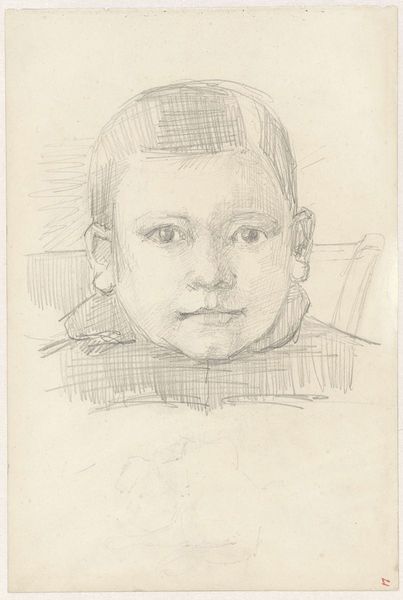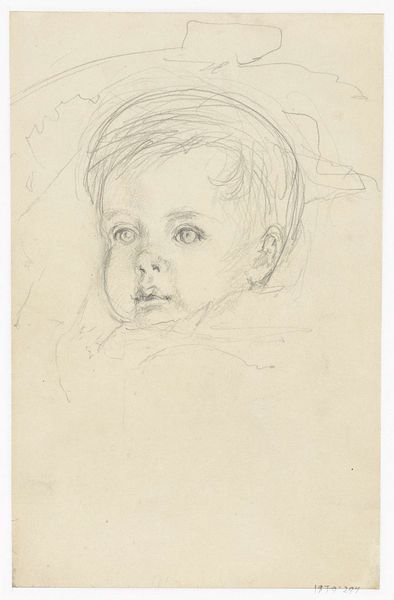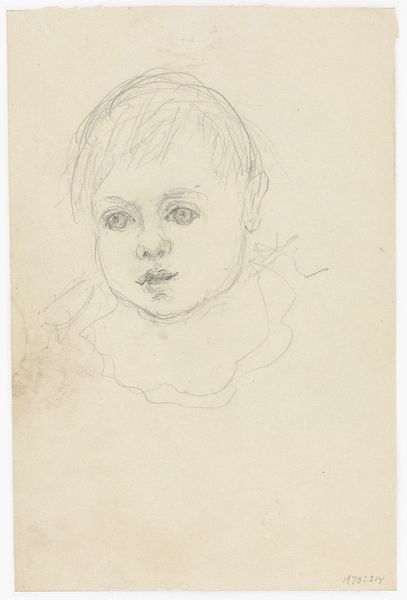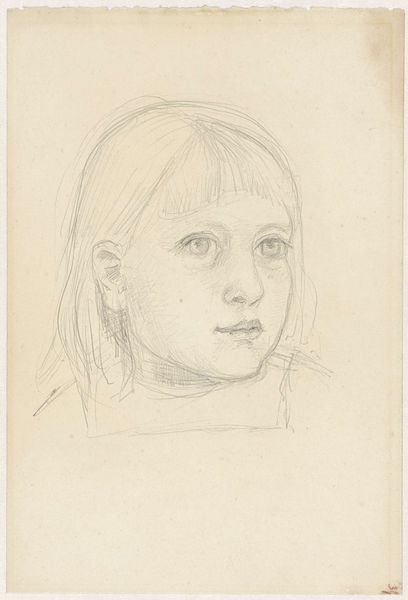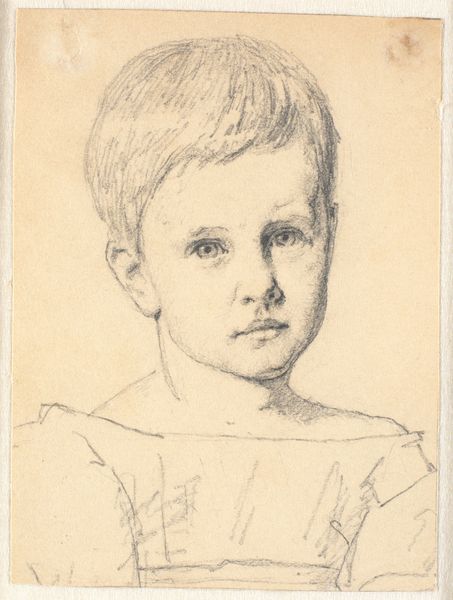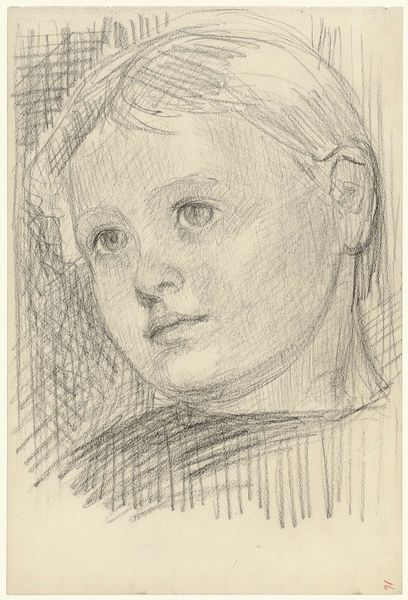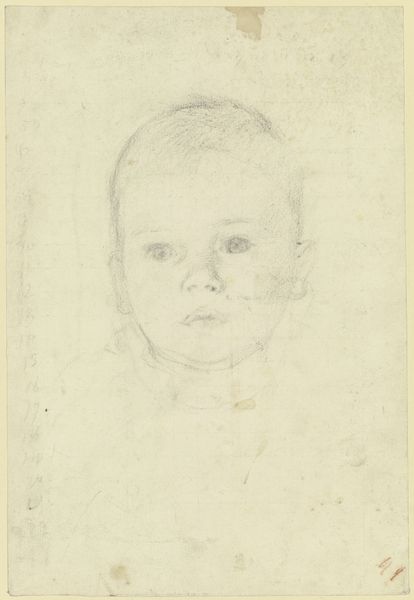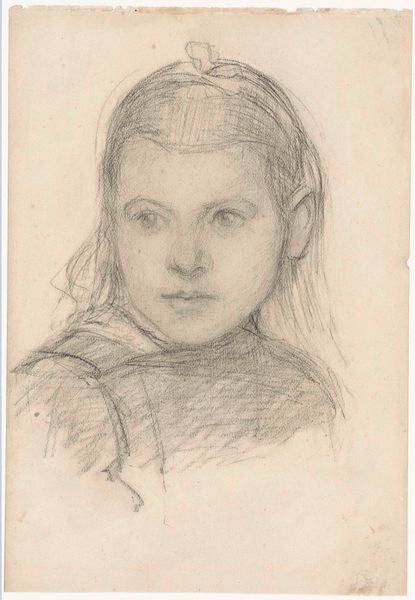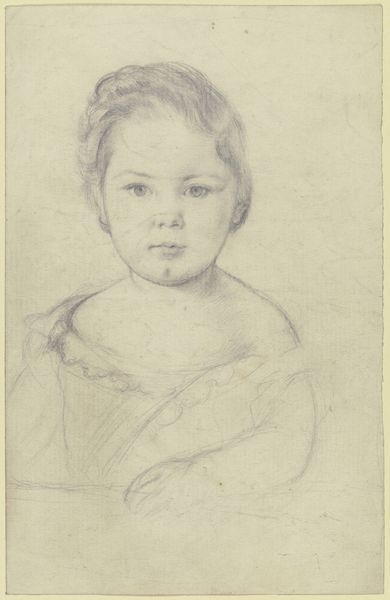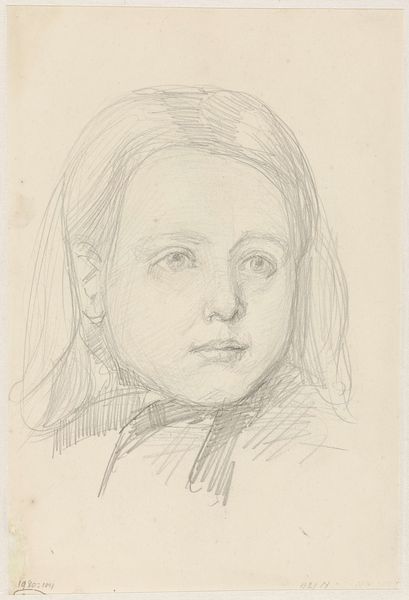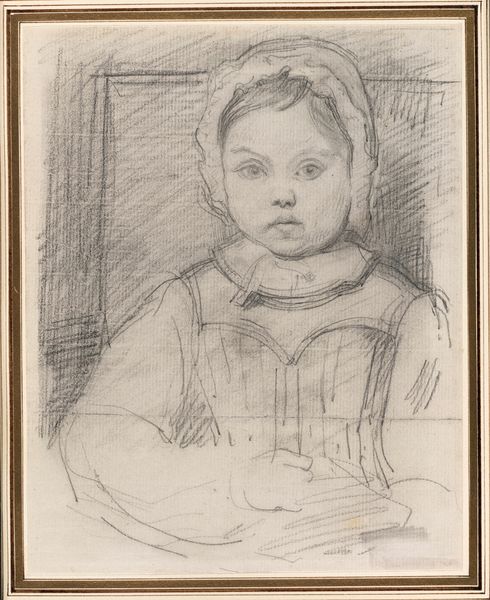
#
pencil drawn
#
amateur sketch
#
light pencil work
#
pencil sketch
#
personal sketchbook
#
idea generation sketch
#
pencil drawing
#
sketchbook drawing
#
portrait drawing
#
pencil work
Dimensions: height 305 mm, width 205 mm
Copyright: Rijks Museum: Open Domain
Editor: Jozef Israëls' "Head of a Young Boy," dating roughly between 1834 and 1911, is rendered in pencil. There’s a gentleness to it, a vulnerability captured in the child’s expression. How would you interpret this drawing in its historical context? Curator: Israëls, as a key figure of the Hague School, often depicted scenes of poverty and hardship. Do you notice how this sketch, seemingly simple, avoids idealizing childhood? The boy's gaze isn't cherubic; there's a certain world-weariness present, wouldn’t you agree? It subtly reflects a changing perception of childhood, moving away from romantic ideals towards a more realistic portrayal influenced by the era’s social realities. Editor: I see that now, especially in the directness of the gaze. Was there a specific audience that Israëls was trying to reach with this kind of work, even just a sketch? Curator: Absolutely. Israëls and his contemporaries aimed to bring the realities of everyday life, especially of the less fortunate, into the purview of the art world. Art academies, and exhibition spaces played a significant role in shaping public taste and even influencing social reform. Consider the growing urban populations and industrial shifts occurring then – works like this helped to make visible the lives and conditions that might otherwise remain unseen by the more privileged classes. What do you think this sketch contributes to that larger project? Editor: It’s fascinating how a seemingly simple drawing could be tied to such larger social shifts! It makes you reconsider what art is *for*. Curator: Precisely. And by analyzing the artistic choices within the broader historical and political landscape, we can appreciate how art engaged with the public discourse of its time. Editor: I see the value in analyzing even a humble sketch within this larger historical context. It opens up a completely new way of looking at art. Curator: Indeed. It reminds us that art doesn't exist in a vacuum, but rather reflects and shapes the society it inhabits.
Comments
No comments
Be the first to comment and join the conversation on the ultimate creative platform.
